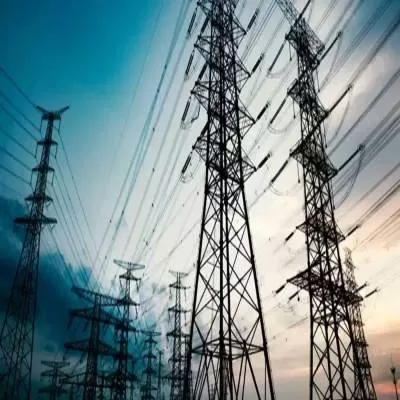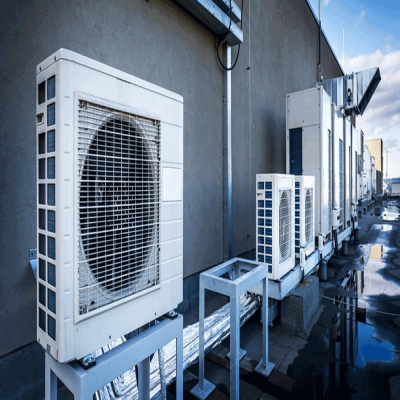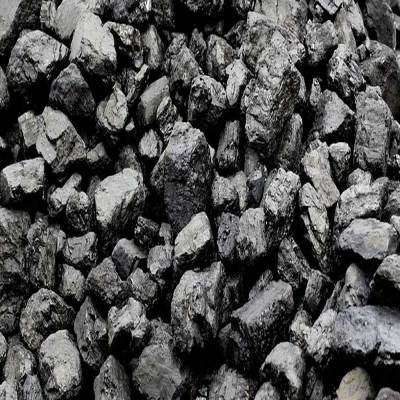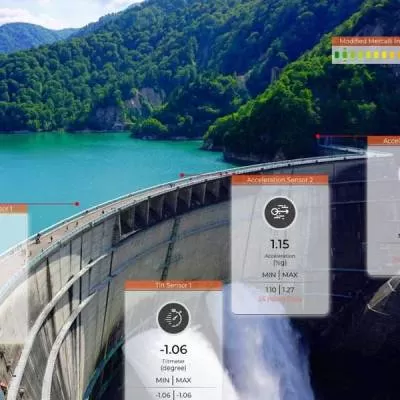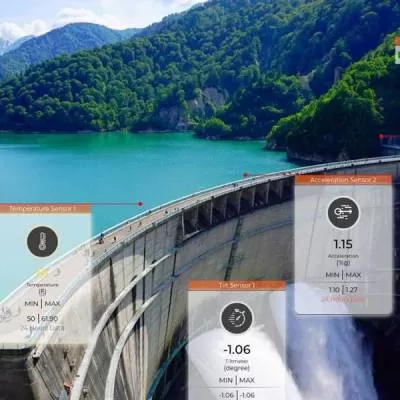- Home
- Technology
- So cool - or Not!

So cool - or Not!
A new study by the Centre for Science and Environment (CSE) offers some cold, hard facts - it suggests that when the outdoor temperature increases to 40oC, a 5-star rated room air-conditioner (RAC) starts performing like a 2-star rated RAC; at above 45oC, it is worse than a 1-star RAC.
To arrive at this conclusion, CSE chose three popular 5-star split RAC models and tested them at the National Accreditation Board for Testing and Calibration Laboratory (NABL) in Delhi using the balanced ambient calorimeter method. The tests investigated the effect of high external temperature on real-world energy performance, the effect of lower internal room temperature on energy performance; and the effect of higher external relative humidity conditions. While a 5-star RAC is supposed to save 20-22 per cent of energy cost compared to a 1-star RAC, the report finds that in the peak of summer, when the temperature crosses 45oC in most of northern India, a 5-star RAC can consume 5-25 per cent more than the rated capacity of a 1-star RAC. Of course, the performance of the 1-star AC is expected to be even worse. Overall, the CSE test results conclude that as outdoor temperature increases substantially, the cooling capacity and energy-efficiency ratio decrease and power consumption of RACs increases (see graph on ´How energy-efficiency drops´).
Current testing standards
At the outset, let´s see how air-conditioners are currently rated. India has implemented the labelling programme for air-conditioners regulated by the Bureau of Energy Efficiency (BEE) under the Ministry of Power. The programme has been designed to classify air-conditioners from 1-star to 5-star, 1-star being the least energy-efficient and 5-star being the most. BEE has adopted a testing code and procedure for air-conditioners as per IS1391 Part 2 with all amendments. The Refrigeration and Air-Conditioning Manufacturers Association of India (RAMA), in conjunction with BEE, launched the first voluntary labelling programme in 2008, which was made mandatory from 2010.
Currently, for energy-efficiency testing and labelling of RACs, India has adopted ISO test procedures for mild climate - 35oC outside and 27oC inside. Additionally, a system reliability test is done at a maximum temperature of 46oC. According to the CSE report, ´This means ACs are rated for energy-efficiency based on performance in 35¦C ambient temperature and 27¦C inside. The same machine is also tested under maximum temperature (46¦C) conditions but this is not to determine its energy-efficiency. There is no method to ensure energy-efficiency is met at the higher temperature range that can happen in the real world.´

According to the CSE report, the observed temperature data for 60 cities in India in different climatic zones shows that 41 cities have at least 175 hours in a year when external ambient temperature is above 35oC. As many as 22 of these 41 cities -including Delhi-NCR, Jaipur, Ahmedabad, Lucknow and Raipur - experience temperatures around 40oC or above.
Star rating is given to manufacturers based on test results provided according to the standard above. It is already known that the efficiency of air-conditioning is inversely proportionate to ambient temperature. This is true for all labelled air-conditioners, irrespective of star rating. ´This performance deterioration at high ambient temperature is an issue that cannot be addressed through IS 1391, where testing is carried out at an outside temperature of 35oC´ points out Dr Ajay Mathur, Director-General, TERI.
CSE suggests that the Bureau of India Standards (BIS) should review and adopt additional tests at a higher and multiple temperature range appropriate for India to evaluate the energy performance of ACs.
Industry take
The industry views it differently. ´From 2010 to 2014, the energy-efficiency quotient has increased by an average of 14 per cent for each star rating,´ points out JM Bhambure, Executive Vice President-R&D and Technology, Blue Star. ´The methodology involved in the labelling programme has been well-defined and is based on BIS. It is a well-recognised reference standard to test and compare products based on performance levels, and these standards are advanced as per the country´s needs from time to time.´

Bhambure believes the CSE report may confuse customers as it furnishes skewed information. ´For a given increase in temperature, the power consumption of a 5-star air-conditioner will be lower than that of a 1-star machine owing to its technological efficiency and higher star rating. This can be compared to the fuel consumption of a vehicle that consumes less fuel on a plain road compared to driving up a gradient.´ To this, Saurabh Diddi, Energy Economist, BEE, adds, ´Through the different tests and formula provided internationally by ISO, a 5-star air-conditioner will work more efficiently than a 2-star air-conditioner at any similar temperature conditions.´
´The efficiencies are declared at standard testing conditions, which is 35¦C,´ says Sachin Maheshwari, National President, ISHRAE (2016-17); Managing Director, Nicotra India; and Director, Caryaire Group of Companies. ´We understand that the recently amended procedure tests room ACs, covering a range from 24¦C to 43¦C, is based on the temperature conditions in India, covering 99 per cent of the country´s temperature.´ He too believes that the CSE report is misleading as the coefficient of performance (COP) is declared at standard conditions in which a 5-star is more efficient than a 1-star and will continue to be under various temperatures. ´As such, the 5-star unit is likely to de-rate less compared to a 1-star,´ he adds.
Manufacturers´ mandate
Maheshwari elaborates further that manufacturers in India have to mandatorily give the following information on the product: ´Star label (1 to 5 Star); capacity; power consumption; COP; and validity in terms of timelines (as the labelling programme is valid for a particular period).
And Bhambure shares, ´As a manufacturer, we provide information that is mandatory on the label. The category under the star labelling programme is also prominently marked. The inverter labelling programme carries additional information of units consumed per annum under standard test conditions.
All this information is based on the units tested in third-party or accredited labs, and the declaration submitted to BEE.´
´Further, as per the legal requirements of BEE, manufacturers have to submit a report during registration of a third-party or accredited test lab,´ says Maheshwari. Bhambure adds that the manufacturer has to file an application before giving all the details as prescribed in the registration form, which is mandatory, before sales can commence.
Agenda for action
That said, the CSE report insists that BEE reviews current test procedures for rating and takes the following steps:
- BIS should amend Rule (IS 1391 part 2) to incorporate an additional test for energy-efficiency ratio based on multiple higher temperature range relevant for different climatic zones.
- BEE should make it mandatory for manufacturers to declare test results based on multiple higher temperature range on product labels. The star labelling system should be adapted to this system.
- Manufacturers should declare annual energy consumption based on cooling capacity tests and give precise information on the label, including exact cooling tonnage.
- We should ratchet the existing star rating to get the best technology in the Indian market.
- Passive architectural features should be promoted to reduce thermal load of buildings.
- SHRIYAL SETHUMADHAVAN and SERAPHINA D´SOUZA
To share your views on this report, write in at feedback@ConstructionWorld.in
Are ACs less energy-efficient than their ratings indicate? CW explores further. A new study by the Centre for Science and Environment (CSE) offers some cold, hard facts - it suggests that when the outdoor temperature increases to 40oC, a 5-star rated room air-conditioner (RAC) starts performing like a 2-star rated RAC; at above 45oC, it is worse than a 1-star RAC. To arrive at this conclusion, CSE chose three popular 5-star split RAC models and tested them at the National Accreditation Board for Testing and Calibration Laboratory (NABL) in Delhi using the balanced ambient calorimeter method. The tests investigated the effect of high external temperature on real-world energy performance, the effect of lower internal room temperature on energy performance; and the effect of higher external relative humidity conditions. While a 5-star RAC is supposed to save 20-22 per cent of energy cost compared to a 1-star RAC, the report finds that in the peak of summer, when the temperature crosses 45oC in most of northern India, a 5-star RAC can consume 5-25 per cent more than the rated capacity of a 1-star RAC. Of course, the performance of the 1-star AC is expected to be even worse. Overall, the CSE test results conclude that as outdoor temperature increases substantially, the cooling capacity and energy-efficiency ratio decrease and power consumption of RACs increases (see graph on ´How energy-efficiency drops´). Current testing standards At the outset, let´s see how air-conditioners are currently rated. India has implemented the labelling programme for air-conditioners regulated by the Bureau of Energy Efficiency (BEE) under the Ministry of Power. The programme has been designed to classify air-conditioners from 1-star to 5-star, 1-star being the least energy-efficient and 5-star being the most. BEE has adopted a testing code and procedure for air-conditioners as per IS1391 Part 2 with all amendments. The Refrigeration and Air-Conditioning Manufacturers Association of India (RAMA), in conjunction with BEE, launched the first voluntary labelling programme in 2008, which was made mandatory from 2010. Currently, for energy-efficiency testing and labelling of RACs, India has adopted ISO test procedures for mild climate - 35oC outside and 27oC inside. Additionally, a system reliability test is done at a maximum temperature of 46oC. According to the CSE report, ´This means ACs are rated for energy-efficiency based on performance in 35¦C ambient temperature and 27¦C inside. The same machine is also tested under maximum temperature (46¦C) conditions but this is not to determine its energy-efficiency. There is no method to ensure energy-efficiency is met at the higher temperature range that can happen in the real world.´ According to the CSE report, the observed temperature data for 60 cities in India in different climatic zones shows that 41 cities have at least 175 hours in a year when external ambient temperature is above 35oC. As many as 22 of these 41 cities -including Delhi-NCR, Jaipur, Ahmedabad, Lucknow and Raipur - experience temperatures around 40oC or above. Star rating is given to manufacturers based on test results provided according to the standard above. It is already known that the efficiency of air-conditioning is inversely proportionate to ambient temperature. This is true for all labelled air-conditioners, irrespective of star rating. ´This performance deterioration at high ambient temperature is an issue that cannot be addressed through IS 1391, where testing is carried out at an outside temperature of 35oC´ points out Dr Ajay Mathur, Director-General, TERI. CSE suggests that the Bureau of India Standards (BIS) should review and adopt additional tests at a higher and multiple temperature range appropriate for India to evaluate the energy performance of ACs. Industry take The industry views it differently. ´From 2010 to 2014, the energy-efficiency quotient has increased by an average of 14 per cent for each star rating,´ points out JM Bhambure, Executive Vice President-R&D and Technology, Blue Star. ´The methodology involved in the labelling programme has been well-defined and is based on BIS. It is a well-recognised reference standard to test and compare products based on performance levels, and these standards are advanced as per the country´s needs from time to time.´ Bhambure believes the CSE report may confuse customers as it furnishes skewed information. ´For a given increase in temperature, the power consumption of a 5-star air-conditioner will be lower than that of a 1-star machine owing to its technological efficiency and higher star rating. This can be compared to the fuel consumption of a vehicle that consumes less fuel on a plain road compared to driving up a gradient.´ To this, Saurabh Diddi, Energy Economist, BEE, adds, ´Through the different tests and formula provided internationally by ISO, a 5-star air-conditioner will work more efficiently than a 2-star air-conditioner at any similar temperature conditions.´ ´The efficiencies are declared at standard testing conditions, which is 35¦C,´ says Sachin Maheshwari, National President, ISHRAE (2016-17); Managing Director, Nicotra India; and Director, Caryaire Group of Companies. ´We understand that the recently amended procedure tests room ACs, covering a range from 24¦C to 43¦C, is based on the temperature conditions in India, covering 99 per cent of the country´s temperature.´ He too believes that the CSE report is misleading as the coefficient of performance (COP) is declared at standard conditions in which a 5-star is more efficient than a 1-star and will continue to be under various temperatures. ´As such, the 5-star unit is likely to de-rate less compared to a 1-star,´ he adds. Manufacturers´ mandate Maheshwari elaborates further that manufacturers in India have to mandatorily give the following information on the product: ´Star label (1 to 5 Star); capacity; power consumption; COP; and validity in terms of timelines (as the labelling programme is valid for a particular period). And Bhambure shares, ´As a manufacturer, we provide information that is mandatory on the label. The category under the star labelling programme is also prominently marked. The inverter labelling programme carries additional information of units consumed per annum under standard test conditions. All this information is based on the units tested in third-party or accredited labs, and the declaration submitted to BEE.´ ´Further, as per the legal requirements of BEE, manufacturers have to submit a report during registration of a third-party or accredited test lab,´ says Maheshwari. Bhambure adds that the manufacturer has to file an application before giving all the details as prescribed in the registration form, which is mandatory, before sales can commence. Agenda for action That said, the CSE report insists that BEE reviews current test procedures for rating and takes the following steps: BIS should amend Rule (IS 1391 part 2) to incorporate an additional test for energy-efficiency ratio based on multiple higher temperature range relevant for different climatic zones. BEE should make it mandatory for manufacturers to declare test results based on multiple higher temperature range on product labels. The star labelling system should be adapted to this system. Manufacturers should declare annual energy consumption based on cooling capacity tests and give precise information on the label, including exact cooling tonnage. We should ratchet the existing star rating to get the best technology in the Indian market. Passive architectural features should be promoted to reduce thermal load of buildings. - SHRIYAL SETHUMADHAVAN and SERAPHINA D´SOUZA To share your views on this report, write in at feedback@ConstructionWorld.in


